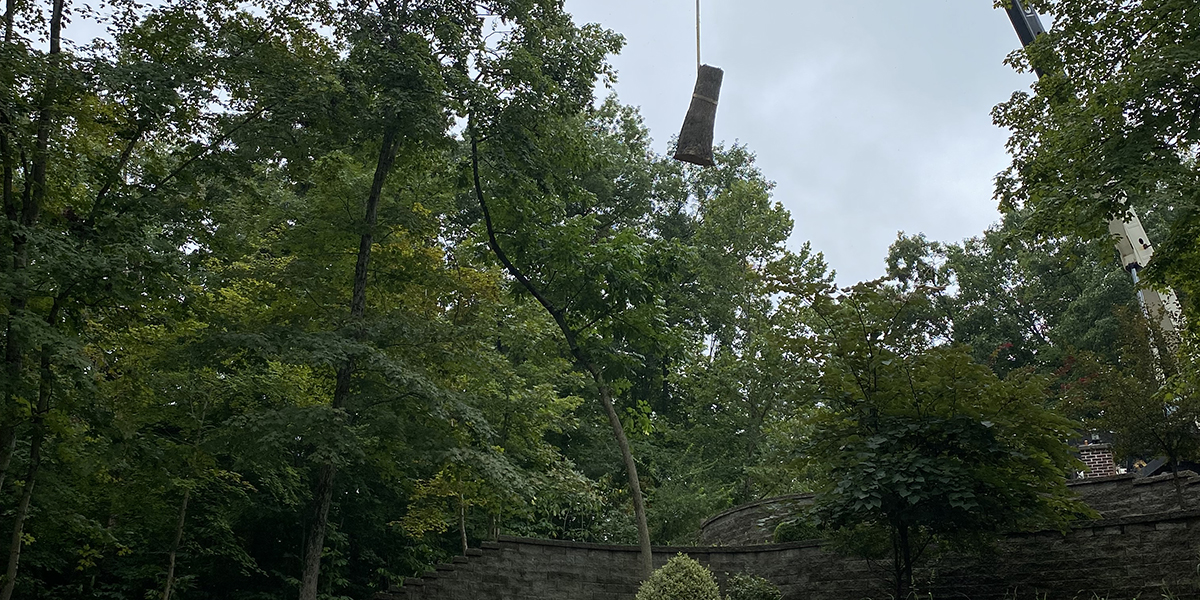
Trees have a natural inclination to grow straight. However, a tree’s trunk may curve because of strong winds, wet soil, improper planting, or other reasons. A young tree will particularly succumb to environmental conditions that may result in tree-leaning.
Whatever the case, you can straighten out a curved tree trunk. The job’s ease or difficulty will depend on the size and age of the curved tree. As one of Akron’s excellent tree services, let’s dig deeper into how to straighten a curved tree trunk.
Can You Straighten All Leaning Trees?
Start by considering the tree’s age and size. Young trees with thin trunks will straighten with minimal effort, while older, thicker trees may prove more challenging to straighten.
Older trees with just a slight lean may continue to grow healthy and thrive despite not being perfectly straight, provided none of its roots show or grow above the surface. It always helps to seek an arborist’s professional opinion when in doubt.
When to Straighten a Leaning Tree
Tree care experts recommend that you straighten a tree if it leans severely enough to permanently affect its vertical growth as it reaches maturity. You want to do this around springtime when you have moist and pliable soils.
Otherwise, you’ll have to add water to increase the soil moisture levels of dry soil.
Straightening a Curved Tree Trunk
Typically referred to as stalking, tree straightening aims to support the tree while its root system re-establishes itself underground after being disturbed.
First, gather the following supplies:
- A mallet or hammering tool
- Hand winch (if necessary)
- Work gloves
- Canvas straps or hammock straps
- Wooden or metal stakes
Next, follow these steps to successfully learn how to straighten a curved tree trunk:
- Use the mallet or hammering tool to drive two to four wooden or metal stakes into the ground around the tree’s perimeter. Do this at a 45-degree angle toward the tree’s trunk. The primary goal here is to avoid the root ball.
- Drive the stakes at least 18 inches deep to provide better reinforcement. Loose and sandy soils may require you to go a bit deeper.
- Next, use slow, steady pressure to manually push the trunk so that the tree stands straight and upright. Using work gloves may help prevent injuries and get you a better grip. Consider asking two or more people for help when straightening a larger tree.
- If the root ball moves significantly, you may need to use a hand winch attached to the trunk and a strong anchor point to reposition the tree to an upright position. Once the tree stands firmly in place, press down on any loose soil around it to pack the root ball in place.
- Finally, place each strap around the tree trunk and fasten it to the corresponding stake. Ensure each strap wraps securely around the tree but give it sufficient wiggle room.
The stake and strap system only provides temporary support for the tree. Once the roots reestablish themselves and tree stabilization takes place, you can remove the stakes. Experts recommend leaving the stakes for one year or one growing season.
Keep tabs on the tree every so often and adjust the tension of the ropes as needed to allow the tree to sway in the wind.
Contact Your Local Tree Experts
If you need unmatched tree care services at unbeatable prices, trust our Petrarca Landcare, Inc. team. We provide various tree care services to keep your trees healthy and looking their best. Our services include:
- Tree trimming and pruning
- Tree removal
- Tree cabling and injections
- Emergency tree services
Contact us at (330) 933-0562 for more information on how to straighten a curved tree trunk or to learn how to deal with a hollow tree trunk.
